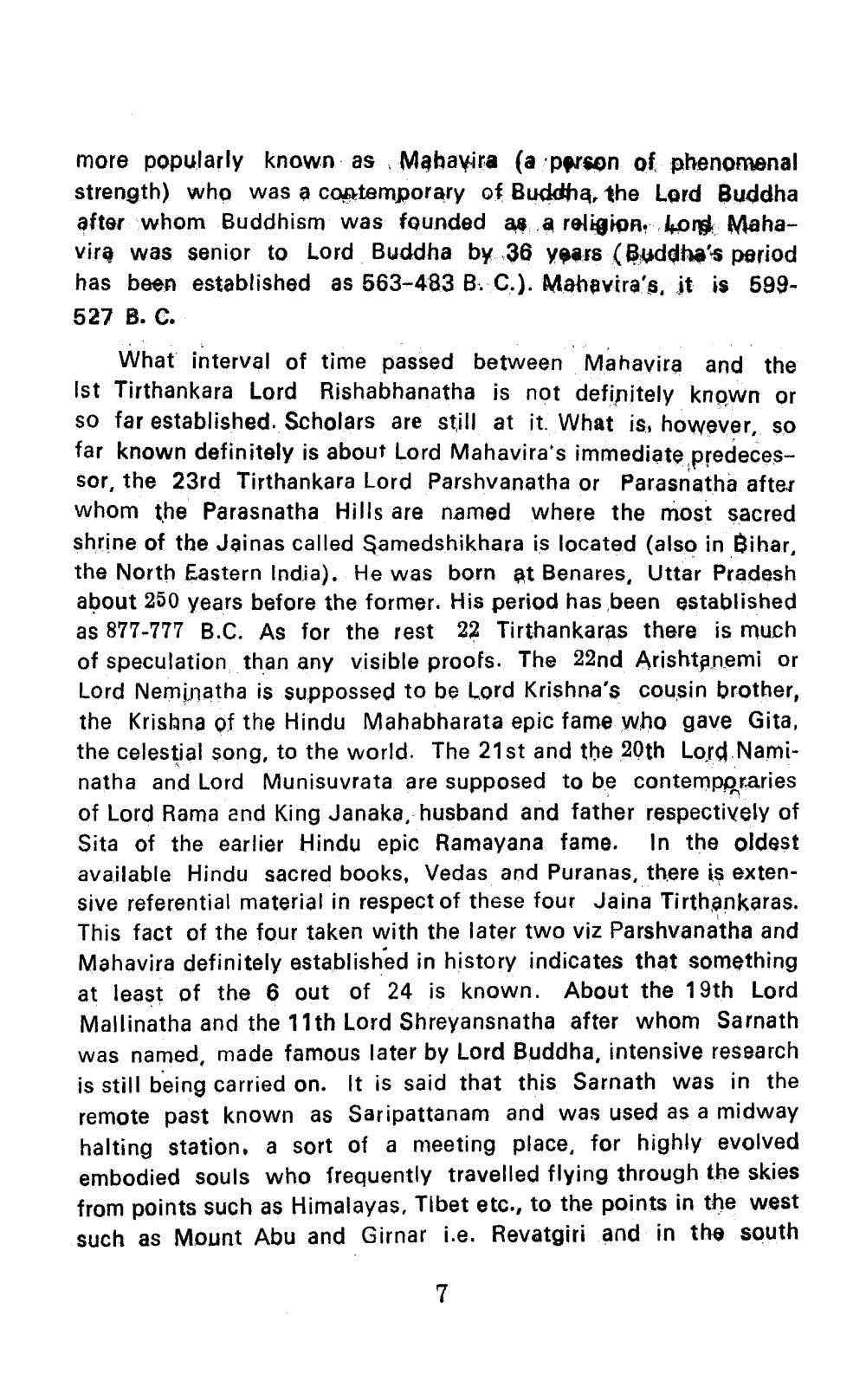________________
more popularly known as Mahavira (a person of phenomenal strength) who was a contemporary of Buddha, the Lord Buddha after whom Buddhism was founded as a religion. Long Mahavirą was senior to Lord Buddha by 36 years (Buddha's period has been established as 563-483 B. C.). Mahavira's, it is 599527 B. C.
What interval of time passed between Mahavira and the Ist Tirthankara Lord Rishabhanatha is not definitely known or so far established. Scholars are still at it. What is, however, so far known definitely is about Lord Mahavira's immediate predecessor, the 23rd Tirthankara Lord Parshvanatha or Parasnatha after whom the Parasnatha Hills are named where the most sacred shrine of the Jainas called Samedshikhara is located (also in Bihar, the North Eastern India). He was born at Benares, Uttar Pradesh about 250 years before the former. His period has been established as 877-777 B.C. As for the rest 22 Tirthankaras there is much of speculation than any visible proofs. The 22nd Arishtanemi or Lord Neminatha is suppossed to be Lord Krishna's cousin brother, the Krishna of the Hindu Mahabharata epic fame who gave Gita, the celestial song, to the world. The 21st and the 20th Lord Naminatha and Lord Munisuvrata are supposed to be contemporaries of Lord Rama and King Janaka, husband and father respectively of Sita of the earlier Hindu epic Ramayana fame. In the oldest available Hindu sacred books, Vedas and Puranas, there is extensive referential material in respect of these four Jaina Tirthankaras. This fact of the four taken with the later two viz Parshvanatha and Mahavira definitely established in history indicates that something at least of the 6 out of 24 is known. About the 19th Lord Mallinatha and the 11th Lord Shreyansnatha after whom Sarnath was named, made famous later by Lord Buddha, intensive research is still being carried on. It is said that this Sarnath was in the remote past known as Saripattanam and was used as a midway halting station, a sort of a meeting place, for highly evolved embodied souls who frequently travelled flying through the skies from points such as Himalayas, Tibet etc., to the points in the west such as Mount Abu and Girnar i.e. Revatgiri and in the south
7




